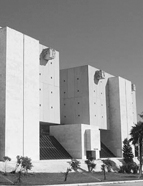

................................
.The vast volumes of documents nationalised by the state under this legislation could not all be concentrated in the National Archive due to a lack of space. Many of the collected registries were deposited in the National Library, the National Assets Archive in Lisbon, and district treasury offices throughout the country, where financial documents from nationalised registries accumulated. A solution to house all the collected archives together only emerged after the Republic’s establishment, with the creation of several annexes to the National Archive. The growing volume of documentation at the Torre do Tombo, coupled with a lack of planning for processing these incorporations—which were managed solely through accompanying transfer lists—resulted in a highly complex situation. With a view t o propos ing measures to improve the organisation and functioning of the archive, José Feliciano de Castilho was tasked with producing a report, as decreed on 5 January 1843. , which vividly illustrates the chaotic conditions that had developed (J. F. Castilho, “[Relatório…],” 1843). This disorder worsened in the second half of the 19th century due to the influx of additional incorporations, regulated by the 1862 law, without the corresponding creation of research tools to provide effective access to the accumulating records (F. Ribeiro, O Acesso… [Access...], vol. 1, 2003, pp. 436-445).
On 29 December 1887, the Superior Council of Public Instruction issued a decree establishing the General Inspection of Public Libraries and Archives, an organisation tasked with overseeing libraries and archives. This measure aimed to develop a sector-wide policy and in some way to manage the challenges posed by the mass concentration of documents. From the establishment of the General Inspection to the present day, a historicist and custodial model has prevailed, originating with Liberalism and consolidating throughout the 19th century. By the early 20th century, this model had adopted new approaches driven by advancements in archival science while retaining its fundamental characteristics.
This work is financed by national funds through FCT - Foundation for Science and Technology, I.P, in the scope of the projects UIDB/04311/2020 and UIDP/04311/2020.
